Video games, especially older games, were uncomfortable putting Nazi iconography on screen. Here’s all the awkwardness that ensued.
There’s always been a desire to let people kill Nazis in video games. It’s been on the priority list since the beginning of the medium. If the graphics technology had existed at the time, Pong would’ve featured Hitler’s severed head being bounced and bruised between two paddles. (Note to self: Next Candy Crush?????)
There’s always been a roadblock in front of the game designers who’ve so deeply wanted to provide a fun, safe space for people to kill Nazis: The unsettling feeling of seeing swastikas and/or Hitler in your video games. Nintendo of America, in particular, had (and still has, I believe) policies banning Nazi iconography; other video game producers and manufactures were also varying levels of skittish.
But that’s evolved over the years. Modern, more realistic, Teen- or Mature-rated World War II video games are now swimming in swastikas. In older games, they were a rarity. Here are 11 awkward moments with swastikas, Nazis and Hitler in video game history.
1 | Bionic Commando (NES, 1988)
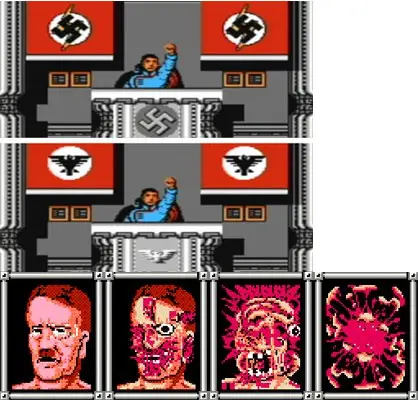
Bionic Commando was the most Nazi-heavy game created for the original Nintendo. Not that people knew it in the U.S. (Unless your pen pal in Japan told you on Usenet or something.) Virtually all of the Nazi references were thoroughly scrubbed when the game transitioned from Japan to the U.S.
The original name, Hitler’s Revival: Top Secret, was changed to Bionic Commando. All swastikas were changed to eagles. The plot of neo-Nazis figuring out how to reincarnate Hitler was changed to a group called the Badds reincarnating their leader, Master-D. Ooooh, I hate those Badds.
But even though Hitler was now Master-D… they didn’t bother to change his look. When you faced him in the final battle, he still had his Charlie Chaplin mustache. (Although, once you beat him, his face still exploded in a rare moment of Nintendo gore.)
2 | The Legend of Zelda (NES, 1986)

There’s a dungeon level in the original Legend of Zelda that’s shaped like a swastika. Sort of.
I mean, it is shaped like a swastika, only it’s not, technically, a swastika. It’s the manji symbol, which was a symbol associated with good luck in several Asian countries and religions. Once the Nazis appropriated it for their use, that should’ve killed it — but it didn’t. When people visit India, that places is still full of swastikas. (And extraordinarily cocky cows.)
So Nintendo designed a level to look like a swastika, and it’s remained that way through every subsequent re-release of the game.
3 | Bonk’s Adventure (TurboGrafx-16, 1992)
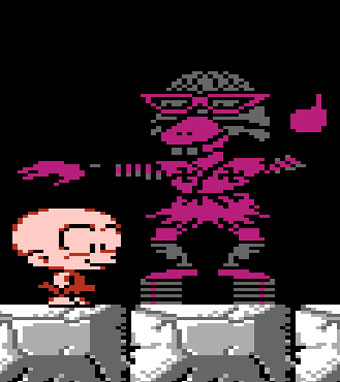
Bonk was the attempted flagship Mario character of TurboGrafx-16. One of the early bosses in the first Bonk game was apparently a grandma (or hipster?) with platform shoes and swastikas embroidered on her lapels. No explanation was ever given for this, although, based solely on this one screenshot, I think they could’ve gone with, “We had really, really, really bad graphic designers on staff.”
4 | Golgo 13: Top Secret Episode (NES, 1988)
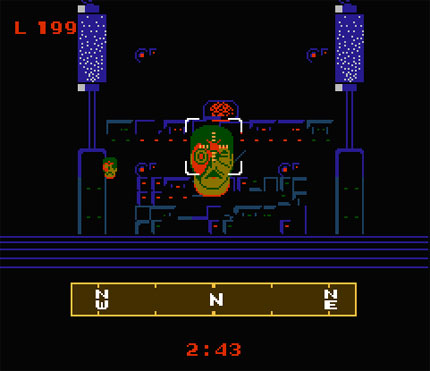
In the final battle, you face off against Hitler’s brain, which produces a seemingly endless supply of cyborg Hitler clones and floating heads. (Hitler retains most of his look but is named “Smirk.” You face off against an endless supply of Smirk clones and heads. Thus far we’ve seen Hitler renamed Master-D and Smirk. Creativity was weird in the ’80s.)
Like many old Nintendo games, though, the difficulty level was set to “virtually impossible.” And the ending was comically unsatisfying; when you finally killed 1,000 Hitlers and accurately sniped Hitler’s brain, the game rewarded you by saying, “. . . AT LAST, THE BATTLE HAS BEEN FINISHED . . .”
Then it went to credits. And yes, the only possibility here is that the Japanese game designers were intentionally screwing with you on behalf of the Axis.
5 | The Rocketeer (SNES, 1992)
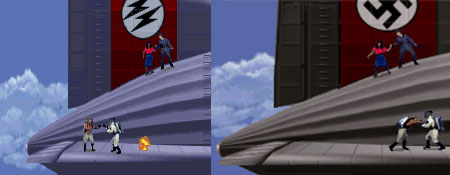
I’ve been a big fan of The Rocketeer ever since I first saw it in theaters (21 years ago, gasp and clutch pearls). Howard Hughes and the Rocketeer fights Nazi, climactically on top of a Zeppelin. Can’t beat that, right? Anyway, in the Super Nintendo adaptation of the game, the fight took place on any ol’ Zeppelin, not the Nazi Zeppelin featured in the PC version of the game. In this case, PC ironically (I think it’s ironic, and not just Internet ironic) meaning personal computer, not politically correct.
6 | Iron Tank: The Invasion of Normandy (NES, 1988)
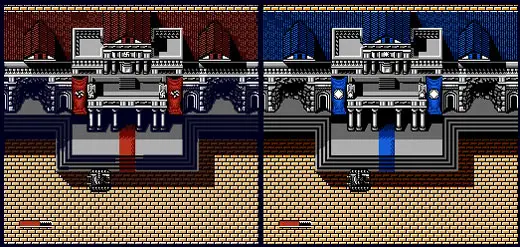
This was an early WWII game that went way over the top in hiding the Nazi imagery from Americans. Not only did they edit out the swastikas from the Japanese version — they turned the Nazi flags blue. That’s a quick way to infuriate purists, semi-purists, AND the Bloods and Crips.
7 | Kid Dracula (Famicom, 1990)
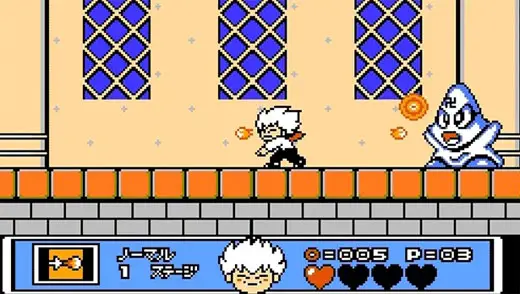
This version of Kid Dracula would show up in black-and-white (or, rather, medium gray and light olive) on Game Boy. When it got to Game Boy, it was censored. But in Japan, he was fighting either KKK members or ghosts with swastikas on either their hoods or… um… ghost foreheads?
8 | Persona 2: Innocent Sin (PSP, 2000)
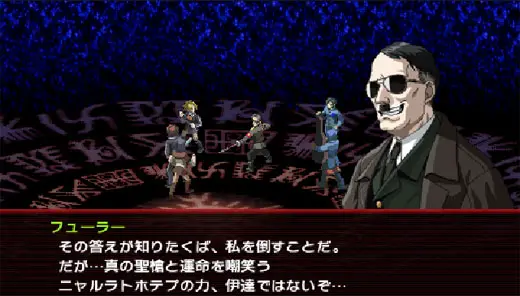
This is a rare case where the Japanese version got the censorship and the U.S. version didn’t. I think it comes back to someone at Sony having a hand-written card, a la Homer Simpson, that says, “Do the opposite of what Nintendo does.” Nintendo censors Nazis in America and not Japan? Then we’ll censor them in Japan and not America!
Anyway, in the Japanese version, they “softened” and Poochie-fied Hitler by putting him in shades. Which is just so much worse.
9 | Wolfenstein 3D (SNES, 1994)

The Wolfenstein series has been carrying the video game banner of Nazi killing for three decades now. Various systems have allowed different amounts of swastika and Hitler appearances. Super Nintendo did the most thorough editing job. They got rid of all the swastikas… renamed Germany the “Master State” (which is, arguably, more offensive)… renamed Hitler as “Staatmeister”… had all the bad guys speak English, not German… and, in the most eye-opening twist, they even shaved Hitler’s mustache.
In spite of all of that, there was still zero percent mystery as to what the game was all about.
10 | Sonic Unleashed (PS2/Wii/360/PS3, 2008)
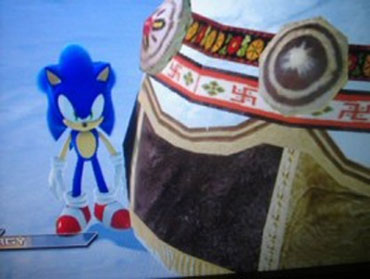
Modern video games are fine with Nazi imagery — as long as it’s in a historical context. Or, at least, a totally believable, organic story context, like zombie Nazis have come back to life trying to reclaim Hitler’s gold and burn all the Woody Allen movies. But Sonic Unleashed didn’t qualify. Here, a designer decided to put swastika designs onto some snowmen’s clothes. Normally, you’d fly past them at high speeds and wouldn’t see them. But if you slowed down, you could see then quite clearly. Sega ended up patching this. And thus, the 45,327th Sonic the Hedgehog video game was saved.
11 | Phozon (Arcade, 1983)
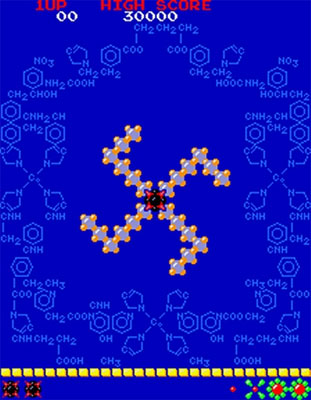
Phozon was an early arcade game that had you build molecules. Well, not real molecules, just shapes that looked like molecules. Occasionally they were molecules shaped like swastikas, it seems. This game was only released in Japan, never the U.S., in what I assume was a successful quest not to give American children any chance to become interested in science.